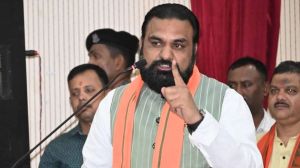ISRO to launch three satellites in 1st quarter of 2011
Another communication satellite GSAT-8 is getting ready for launch onboard Ariane-5 in April-May 2011,the ISRO Chairman said.
Three major satellite launches are planned during the first quarter of this year by ISRO,whose recent mission to launch the GSAT-5P communication satellite onboard homegrown GSLV-F06 rocket failed.
‘Resourcesat-2′,an advanced remote sensing satellite,’Youthsat’,a participatory scientific mission with payloads from Russia and India and X-sat,Singapore’s first indigenous satellite,would be launched on board PSLV C-16 in February,March and April,ISRO Chairman K Radhakrishnan said here.
“We have three major missions slated in coming February,March and April. Among them Resourcesat-2 is meant to replace Resourcesat-1,launched in 2003,to provide data connectivity,” he told an international conference at Vikram Sarabhai Space Centre (VSSC) here.
‘Youthsat’ would carry a payload developed by students of Moscow University,” he told the meet,organised by Indian Institute of Space Science and Technology (IIST) and Optical Society of India (OSI).
“PSLV-C16 vehicle has already been assembled at the space port at Sreeharikota. Resourcesat-2 and Youthsat are getting ready for shipment to SHAR from the ISRO’s centres. Both these satellites carry a host of advanced optical payloads,” he said.
Another communication satellite GSAT-8 is getting ready for launch onboard Ariane-5 in April-May 2011,the ISRO Chairman said.
On the launch failure of GSLV-F06 in December last,he said,”We have several success stories and a couple of failures. We will learn from our failures.”
GSLV-F06,powered by a Russian cryogenic engine,carrying GSAT-5P failed in its mission on December 25 when the rocket suffered a snag seconds after the liftoff and exploded in flames before falling into the Bay of Bengal.
Radhakrishnan said the cause of the failure had been pinpointed and anything definite could be stated only after detailed evaluation and studies.
“We had nine launches and realised nine spacecraft,including the path-breaking Chandrayaan during 2006-09. We saw seven successful missions of PSLV,including two dedicated commercial launches and two missions of GSLV with a failure of GSLV F02 in 2006 and a partial success of GSLV-F04 in 2007.”
The successful launch of seven satellites,including the high resolution Cartosat-2 series,placed India into an exclusive space club,he said.
“Globally our efforts have been recognised. Several of the world’s major space powers — Russia,USA and France — have shown keen interest in partnering with India on several fronts in space,” he said.
Microwave Remote Sensing Satellite RISAT-1,Meteorological Satellite INSAT-3D,Communication Satellites such as GSAT-7 and GSAT-10 and two Indo-French Joint Missions viz.,Megha-Tropiques and SARAL are the agency’s major plans in the next year,Radhakrishnan said.
Speaking at the conference on ‘Contemporary trends in optics and opto-electronics’,Radhakrishnan emphasised the importance of optical studies in space technology.
“Optics is second only to microwave engineering in space science. The science has come a long way to this modern age of opto-electronic sensors and devices that find wide applications in myriad areas,including space technology,communications,manufacturing,medicine and medical equipment,and bio-photonics,to name a few.”
VSSC Centre Director P S Veeraraghavan,Indian Institute of Space Science and Technology Director K S Das Gupta,VSSC Chief Controller K M Nair,Director Indian Institute of Science Education and Research (IISER) Prof E D Jemmis,Director ISAC (ISRO Satellite Centre) DR T K Alex were also present.







